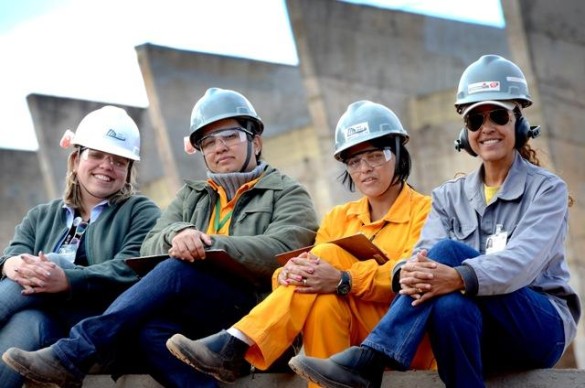Zigurat Global Institute of Technology
Blog / BIM & Construction Management
Women fight for their rightful place in the construction industry
Categories

The gender gap might already be a well-recognized fact about the job market, but we should also take into consideration that there are traditionally more masculine fields where the obstacles to gain access are even bigger, and construction happens to be one of them. Therefore, in a market that is constantly growing (as a matter of fact, 15 new jobs out of 100 are in the construction industry) the women are presented with opportunities that they simply cannot overlook because of stereotypes or prejudices.
The construction business requires highly qualified professionals, in exchange it offers better working conditions than the more traditional areas where women have always “fitted in” more easily: functions and activities dedicated to care. According to the data from EPA (Labor Force Survey) for the second quarter of the year, at the present moment we can observe an eminent masculinization of the field with only 8,7% of the people employed being women, compared with 91,3% being men. And the sector is in full growth, 10.26% in this second quarter of 2018 when compared to the previous year.
Promoting the incorporation of women in Construction
Faced with this reality, institutions such as the Red Cross, in collaboration with Fundación Laboral de la Contrucción, put the focus on gender issues in the sector with conferences “Promoting the incorporation of women in construction”, that counted with the participation of the representatives of the companies on the field, the public administrations and the professionals of construction industry.
On this days, the main obstacles and difficulties that women have to face when trying to access a job in the field were discussed. They have been identified as “limitations due to prejudice and gender stereotypes” as well as “the need and the opportunity to promote a change in mentality in the industry” based on the conclusions of the Observatorio de la Construcción. Besides that, during the conference the main lines of work and workplaces that come with more possibilities of incorporation for women, as well as strategies and measures that could enhance the occupational integration of women were also identified. At the same time, the opportunities that mixed teams in the workplace could present for the companies were highlighted.
The FLC is one of the entities that has strongly committed to increasing the presence of women in the construction sector, with the result that, in 2017 for example, they trained over 4600 women, a figure that, however slowly, doesn´t cease to grow. In addition, they outlined the European initiative "Woman can build" in which the joint entity participates. It is a project of innovation and an exchange of good practices aimed at the re-conception of vocational training that could lead us towards an equal construction industry in which Spain participates with Germany, Belgium, France, Italy and Portugal.
Women in Civil Engineering
But if we look at the EPA (Labour Force Survey), we come along the following data referring to the female presence in the field of Civil Engineering: in the second quarter of 2018, which is the latest available to date, there were 10,000 women employed in Civil Engineering, of 106,400 women accounted for in the whole sector, compared to 100,200 men in Civil Engineering and 1,108,800 in total in the construction sector. According to this data, 45,000 women were also engaged in the construction of buildings and 51,200 in specialized construction activities.
Spanish Royal Academy of Engineering shares the belief that the sector is in need of a change in mentality and has launched a project “Mujer e Ingeniería” that we can learn more about in an interview with its director, Sara Gómez, for the Aforos 116 magazine. In the framework of this project they have made a call for grant applications for students of the last years of Degree in Engineering, in addition to organizing activities of very diverse nature aimed at increasingly younger students.
In this case, the Women and Engineering Project alludes to the female presence in university careers grouped under the acronym STEM (Science, Technology, Engineering and Mathematics). It aims, therefore, well beyond the construction sector, although it is true that it is also directed to the end of women entering the sector and accessing the highest positions in both public administrations and private companies without complexes, glass ceilings and with valuable examples from other women.




